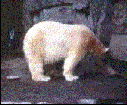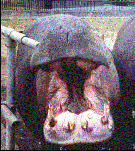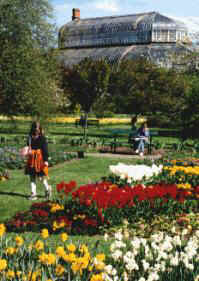|
Places to Visit in Our Locality
|
|
|
|
Introduction Dublin is Ireland’s capital city so there are lots of places to visit – museums, art galleries, churches, parks, the beach, shops etc. We have written about some famous places and some fun places. This website has lots of information on our capital city: http://www.visitdublin.com/ . The Phoenix Park The Phoenix Park is the largest walled park in Europe and one of the largest enclosed parks in the world, with an area of 1,752 acres. The road through the Phoenix Park is over 3 miles long. The Phoenix Park is rich in flora and fauna which means plant and animal life. It has football pitches, lots of trees and herds of wild fallow deer. The President’s house, Áras an Uachtaráin is in the park. The American Ambassador’s House is also there as well as Farmleigh House which is a big house used by the government for important meetings. The Zoo is in the Phoenix Park. Ashtown Castle Visitor Centre provides information about the park. By Christine and Jade . Dublin Zoo
Dublin Zoo is a fun and interesting place to visit. Dublin Zoo has over 700 animals and birds from around the world in 66 acres acres of park land in the Phoenix Park. Dublin Zoo is the No.1 visitor attraction in Ireland. The African Plains area has doubled the size of the zoo and the larger African animals have much more room. In the zoo there are mammals, birds and some reptiles from all over the world. It has lots of animals there and there is a pet corner. The Zoological Society of Dublin was founded in 1830 with animals supplied by London Zoo. Dublin Zoo in 1830 was different to today. It showed unusual animals to people who had never seen anything like them. The purpose of Dublin zoo today is to breed endangered animals and to educate. Our favourite animals are tigers and seals. Did you know that the lion that roared at the start of the old MGM movies was a Dublin Zoo lion? If you want to find out more about Dublin zoo visit this website. by Niamh and Lindsay http://www.dublinzoo.ie/ Croke Park The Gaelic Athletic Association (GAA) was founded in 1884. It is Ireland's largest sporting organisation. Croke Park is a very big football stadium owned by the GAA. It is the fourth largest stadium in Europe. Gaelic football, hurling and camogie, our national games are played here. There is a museum in Croke Park. It is not far from our school on the northside of Dublin city. I went to see Wicklow vs Wexford and Wexford won. The colour of the Dublin jersey is light and dark blue. The opening ceremony for the Special Olympics was held in Croke Park last June. by Stacey and Mairead http://www.gaa.ie/ Christ Church Cathedral Christchurch cathedral was founded in the year 1038 by Sitric, King of the Dublin Norsemen, for Dunan, the first bishop of Dublin. It began as a simple wooden church. In 1169 the church was rebuilt in stone by the Earl of Pembroke (known as “Strongbow”) for Laurence O’Toole, archbishop of Dublin. The crypt (lower church), dating from 1172, is unique in Ireland because of its size. It has lots of interesting items including punishment stocks, the famous dessicated “cat and mouse” who got stuck in the organ pipes during a chase and the 1689 candlesticks and tabernacle of King James II. By Leanne and Michelle St.Patrick’s Cathedral St. Patrick’s Cathedral is one of the most ancient and majestic cathedrals in the world. The cathedral stands on the oldest Christian site in Dublin. A church has stood here since the 5th century. St. Patrick is said to have baptised converts to the Christian faith in a well in the present St. Patrick’s Park. In 1191 the Normans built a church on this site it was re-built in the 13th century. That church is the building we see today. The first university in Ireland was founded in St. Patrick’s in 1320 and continued for nearly 200 years. There is a famous choir school attached to the cathedral today. Jonathan Swift, who wrote Gulliver’s Travels was the dean of St. Patrick’s. By Leanne and Michelle St. Michan’s Church One of Dublin's more unusual attractions is St. Michan's Church. It was founded in 1095 and named after a Danish bishop. It was the only parish church in Dublin north of the River Liffey for five hundred years. The present chuch was built around 1685. The organ is one of the oldest in the country still in use. It is believed that George F. Handel played it when composing The Messiah. (Handel’s Messiah was performed for the first time in Dublin in 1742.) People visit the church because of the vaults underneath the church. You enter the vaults down a narrow stone stairway. On either side of a tunnel are rooms with coffins. Some coffin lids are open….. The dry atmosphere in the vaults has mummified the corpses and visitors may see the result of this! Bram Stoker who wrote Dracula is buried there. You can visit the crypt …… scary!! Guinness Brewery No visit to Dublin is complete without a trip to the famous Guinness brewery in James Gate in Dublin. Guinness got its name from Arthur Guinness who began brewing his famous “stout “in 1759. Guinness is now produced around the world at the rate of over ten million glasses each day. There are regular tours which allow you to relax and enjoy a sample of Guinness in the visitors bar, where there are great views of the city, and also to show you how Guinness is made. by Orla and Shauna National Aquatic and Leisure Centre
The National Aquatic and Leisure Centre near Blanchardtown is Europe’s largest indoor waterworld. We love to visit the National Aquatic Centre and enjoy the water slides. It has pools for fun and competition. The competition pool is a 50m x 25m (10 lanes) Olympic standard competition pool with a diving pool. The 50m pool has submersible bulkheads which can be raised to make a 10 lane 25m competition pool in the centre of the 50m pool. There is seating room for 2500 with a media area and television and radio commentary positions. The European swimming championships were held there in December 2003. by Danielle www.nac.ie The National Botanic Gardens
The National Botanic Gardens were opened in 1795 when the Royal Dublin Society bought 11 hectares of land at Glasnevin. The gardens have many strange and unusual plants from all over the world and there are huge greenhouses for plants from hot countries. The Tolka River flows through the gardens. The gardens are close to our school. They are open every day and entrance is free. By Amy and Emma The National Art Gallery The National Art Gallery is a place where people go to look at paintings by famous artists from all over the world. It is a beautiful building. The National Gallery was opened in January 1864. There were only 125 paintings in the collection then. Today the Gallery has 2500 paintings and about 10,000 other works including watercolours, drawings, prints and sculpture. Every major European School of Painting is represented. There is an excellent collection of Irish paintings. There are children’s art classes at weekends and there is a restaurant in the gallery. Caravaggio’s “Betrayal of Christ” was found recently in a monastery in Dublin. It had been hanging there for many years and no-one knew it was a special painting. It is now hanging safely in the gallery. Entrance to the gallery is free. by Vanessa and Ciara The National Museum of Ireland The National of Ireland was opened in 1890. It contains collections from the stone Age to the twentieth century. Exhibitons include: · Irelands Gold which shows the museum’s collection of Bronze Age gold. The gold jewellery is magnificent. · The Egyptians which tells about the ancient Egyptians · The Vikings which tells the history of the Vikings in Ireland etc. It is and interesting place to visit and admission is free. by Kim The Natural History Museum The Natural History Museum is part of the National Museum of Ireland. It is a zoological (animal) museum containing collections of the animal life of Ireland. There is also an African and Asian exhibition. The Irish room is on the ground floor. Irish mammals are displayed in the centre of the floor including an Irish elk which is a huge deer. Elks are now extinct in Ireland. The animals are all stuffed and most are in glass cases. The Spire The Spire was finished in 2003. It is 120 metres high and 3 metres in diameter at the bottom. It is situated in the middle of O’Connell Street which is Dublin’s main street. Its highest point is 15cm in diameter. It has a little red light on the very top that lights up at night to warn aircraft. Under the red light 11 metres of the spire lights up at night through holes that were drilled in the metal. Ian Ritchie Architects designed it. Some people think it looks great others think it is silly. By Ailish and Aisling The Wax Museum The main section of the wax exhibition shows famous Irish people from the past and from today. There are life-size figures of heroes from history. You can see our Presidents and our Taoisigh (Prime Ministers). You can meet writers like Joyce and Yeats. Children love the “Childrens World of Fairytale and Fantasy”. The Chamber of Horrors is a bit frightening! You can hear the sound of clanging chains and blood curdling screams. In the “Hall of the Megastars” you can see Michael Jackson, Madonna and Elvis Presley. You can hear about each scene at the touch of a button. by Claire and Kate Beaches There are lots of beaches around Dublin. On the northside we can go to Dollymount, Portmarnock, Skerries and Bettystown. Howth harbour is also very nice and you can go for walks along the cliffs. Shopping in Dublin Dublin is great for shopping. Henry Street and Grafton Street are busy pedestrian shopping streets with buskers and street performers. There are shopping centres in the city too like St. Stephen’s Green Centre, The Ilac Centre and Jervis Street. Our favourite place to shop is Blanchardstown Shopping Centre which is huge and near Finglas – the car park can hold 6000 cars. Moore Street in the city centre is famous for its street traders selling fruit, flowers and fish. |



